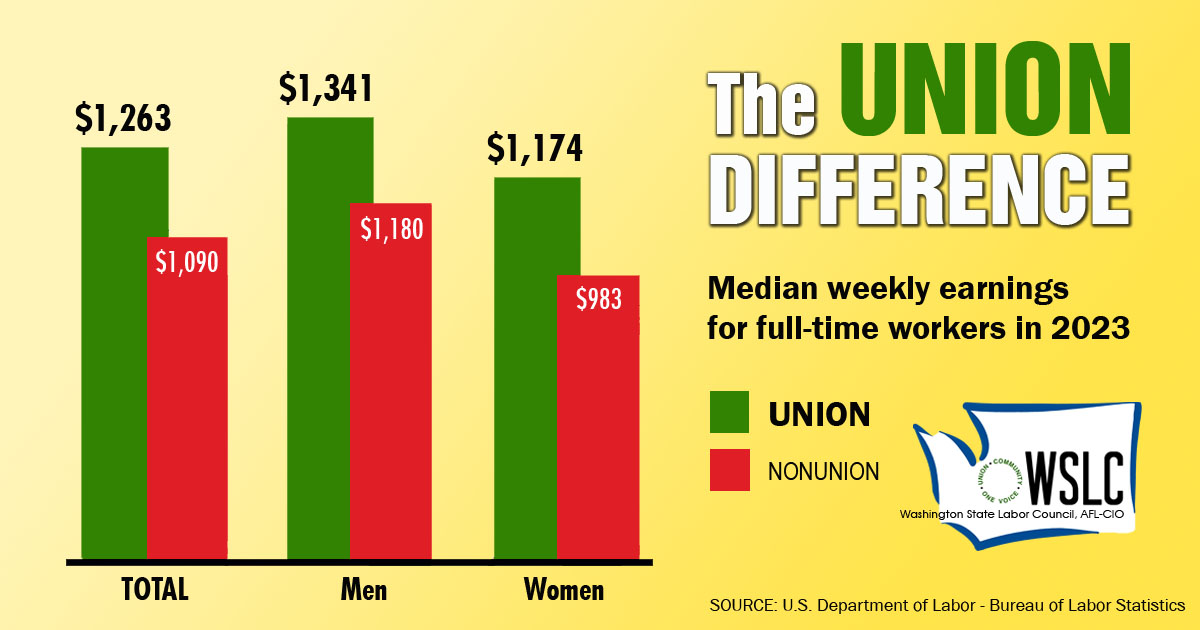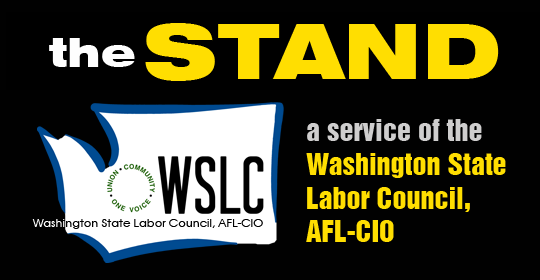STATE GOVERNMENT
To cut or not to cut: budget wins and losses
Here’s what working people won and lost with revenue package and biennial budget passed this legislative session
by JOE KENDO
(June 11, 2025) — Every two years, lawmakers convene in Olympia for the first of two Constitutionally-mandated Legislative sessions, opening with 105 days to develop the budgets and revenue packages that fuel the operation of state government. In 2025, lawmakers experienced a crucible unlike any individual budget cycle in recent memory, with budget forecasters predicting a budget shortfall in the billions.
These anticipated revenue shortfalls ultimately came to define everyone’s work at the Capitol this session; lawmakers would need to navigate a nearly $16 billion budget gap over four years in order to meet the basic needs of Washingtonians and to fulfill commitments for additional spending in K-12 education, housing, IT, and state workers’ wages. Further, our state’s transportation budget – a series of key investments in job-creating infrastructure to help move our economy forward – stared down an $8 billion shortfall through 2031, including a $1 billion gap for the 2025-27 biennium. Washington’s two-year budget must balance, and by law, that balancing must extend an additional two years; a four year balancing requirement not adopted by any other state nor the federal government.
Raising revenue was an obvious necessity this session; cutting our way out of this shortfall would have been more devastating than even the slash-and-burn budgets adopted during the Great Recession 15 years ago, an experience from which our state has not yet recovered. However, this year, legislators in the Democratic majority caucus, with notable leadership by Rep. April Berg and Sen. Noel Frame, was committed to avoiding past mistakes, and committed early on to identify new revenue to mitigate the worst of the cuts necessary to make the budget balance. 
While there were novel tax proposals explored this year, including corporate taxes on very high payrolls and taxes on hoarded wealth, lawmakers opted to expand current revenue structures in favor of reliability and stability. All told, the Legislature raised around $9 billion over the next four years in support of the Operating budget, and $3 billion in support of the Transportation Budget (the Capital Budget, which funds non-transportation construction, is largely financed with bonds.)
In addition to new revenue, the Operating Budget also benefited from one-time transfers from dedicated accounts designed to support specific programs. While the Department of Labor and Industries, for instance, is primarily funded by workers’ compensation premiums (and those accounts were wisely left alone), the Electrical License Account, the Pressure Systems Safety Account, and the Public Works Administrative Account were tapped to subsidize the general fund.
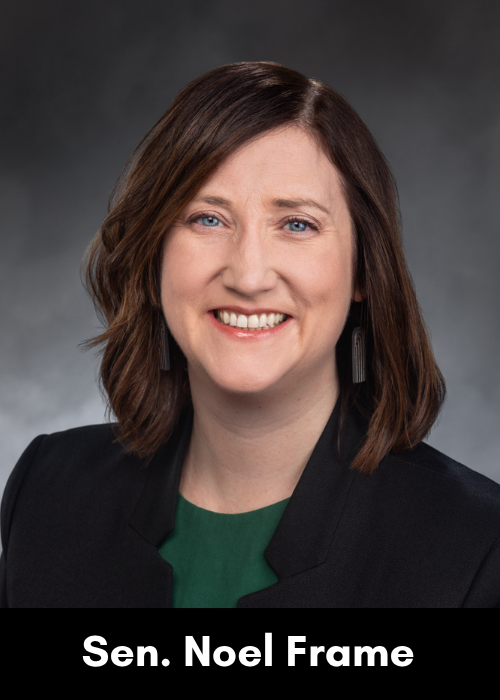 Combined with other dedicated account transfers from sources like the Public Works Assistance Account, $680 million was shifted from various isolated programs to balance the broader budget.
Combined with other dedicated account transfers from sources like the Public Works Assistance Account, $680 million was shifted from various isolated programs to balance the broader budget.
What did all of that hard revenue work preserve for the people of Washington? Quite a bit
While maintaining the existence of most core state services despite deep cuts, the Operating Budget contains several significant new investments in public services. $750 million was added for special education services (well below the $2 billion need, but a significant increase none-the-less) and $213 million was added for school materials, supplies, and operating costs. $93 million was added for emergency food assistance, and $25 million to improve support for refugees.
The Legislature also continued to support Labor-backed energy investments championed by Climate Jobs Washington. $250,000 was appropriated in support of the development of sustainable maritime fuels, along with $500,000 to continue work in support of establishing a Washington State centric supply chain for off-shore wind energy development. An additional, nearly $500,000 duo of investments were funded to support planning expanded energy transmission capacity and the workforce needs to realize the fulfillment of critical infrastructure.
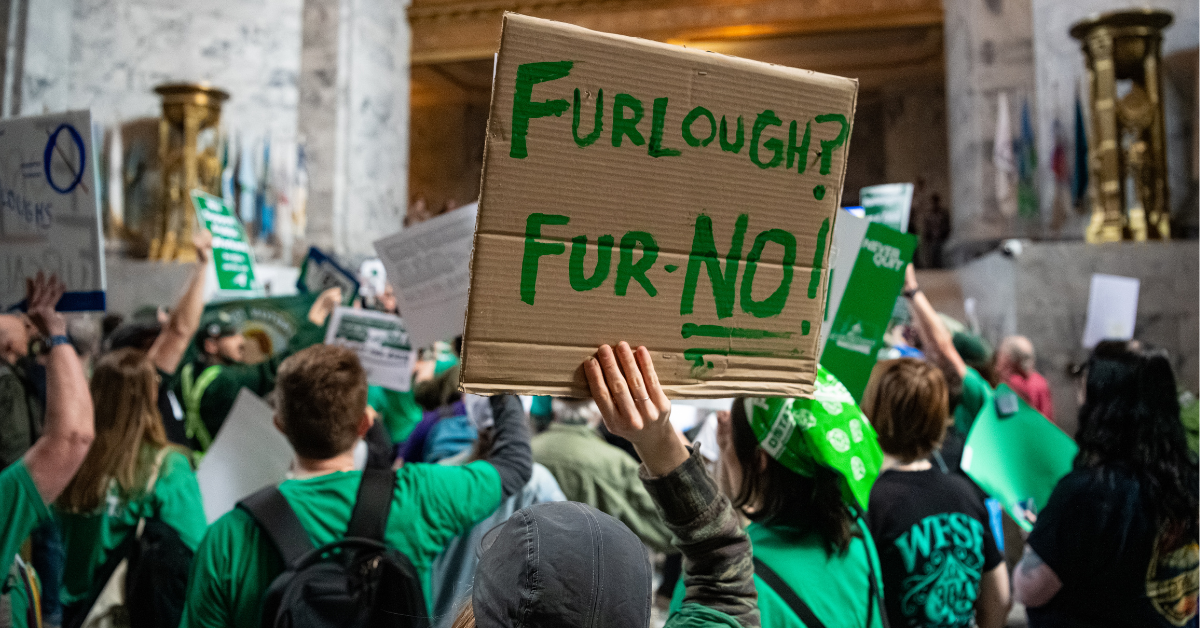
Photo: WFSE
State worker collective bargaining agreements
Most state employees’ collective bargaining agreements for the ‘25-’27 biennium were also ratified and funded, including the CBAs for Legislative Staff whose first-ever contracts were negotiated, ratified, and funded under a 2022 law empowering those workers to come together to form unions. Congratulations to Washington Public Employees Association (WPEA) and the Legislative Professionals Association members who secured these first contracts to improve their work-lives.
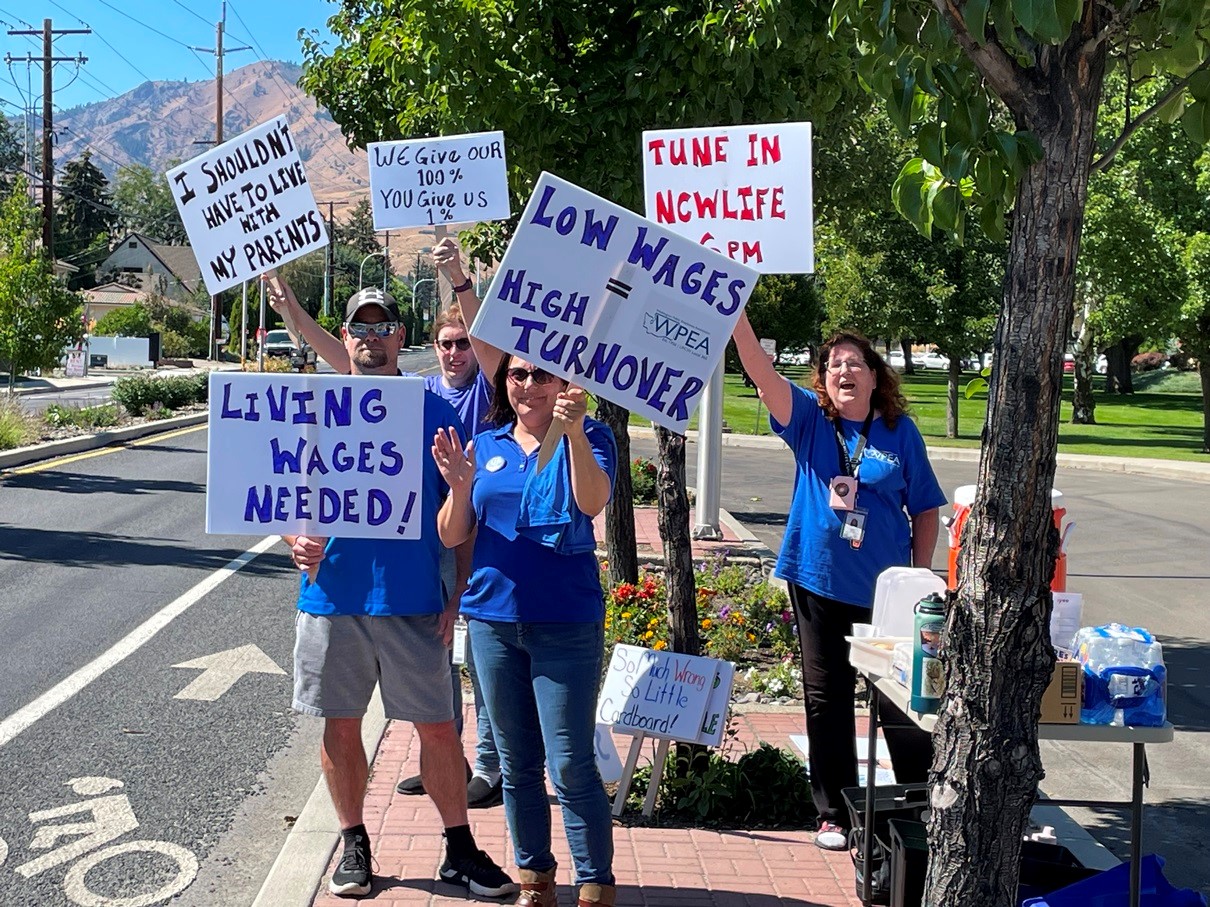
Photo: WPEA
State worker and private sector direct service providers represented by WFSE/AFSCME, Teamsters 117, Teamsters 760, PTE17, Inlandboatmen, Masters Mates and Pilots, Marine Engineer Beneficial Association, OPEIU 8, SEIU 6, SEIU 1199NW, SEIU 925, and SEIU 775 had agreements ratified and funded in the budget. Furlough days for state employees and an erosion of collective bargaining rights over healthcare costs originally included in budget proposals from the Governor and the Senate were not adopted in the final version of the budget.
Unfortunately, due to a negotiations dispute and subsequent lawsuit involving the Office of Financial Management, WPEA’s general government and community college contracts were not finalized and presented to the Legislature until early April, well past most of the budget planning by either chamber. As a result, those workers’ raises were not funded, though doing so was within the Legislature’s ability. The Labor movement stands with these 5,300 dedicated public servants in calling for the Legislature to ratify these agreements, and to make those workers whole as soon as legally possible. It is unacceptable that represented staff at agencies like the Departments of Revenue and Natural Resources, and 14 community colleges across the state, will not realize in a timely way the wages and workplace improvements that they have earned.
Cuts and expansion delays
While lawmakers should be applauded for digging deep to avoid an all-cuts budget, a new-revenue-budget is not a no-cuts-budget. Significant reductions in programs were needed to make the books balance. The Legislature adopted $4 billion over four years in cuts recommended by Governor Ferguson, and implemented additional $4 billion over four years in reductions on their own.
Many working families with young children will be disappointed to know that expected expansions in eligibility for childcare programs like ECEAP and Working Connections were delayed for several years. Deep cuts in the Departments of Children, Youth, and Families (DCYF), Corrections (DOC), Social and Health Services (DSHS) and institutions of Higher Education will have a significant impact on working families. Over $117 million was cut from DSHS mental health programs, and over $25 million in generalized Long-Term Care cuts were imposed. Over $8 million were cut from state parks, though an increase in Discover Pass fees will eventually result in additional revenue for that agency. Several Community Corrections programs were also slashed, including closures of the Peninsula, Bishop Lewis, Tri-Cities, and Ahtanum View Reentry Centers, and the Mission Creek Correctional Center for Women, while general staff reductions were also mandated. A 1.5% reduction in State General Fund support for colleges and universities, coupled with additional acute program cuts, amounted to a nearly $70 million reduction in higher education funding, impacting students, faculty, and staff.
Initially slated for elimination, Yakima Valley School and Rainier School, DSHS residential facilities for people with severe disabilities, were spared due to the activism of WFSE/AFSCME members and the families of residents at those facilities. Rainier in particular benefitted from an 11th hour push which resulted in a compromise whereby the facility will stay open for those currently in residence, while no new residents will be admitted, thus saving 700 jobs and preserving housing and care stability for those currently living at the institution in Buckley.
After all these cuts and additional revenues are implemented, surely it will be clear sailing for public services… right?
Unfortunately, no. Our state’s regressive and outdated revenue system will continue to plague lawmakers’ ability to meet the needs of our growing and dynamic population. While recent modernizations of our tax code will help – including the adoption of a capital gains tax, and the expansion of excise taxes on certain services – the heavy reliance on taxes tied to sales and services versus those tied to actual wealth will keep the revenue roller coaster going. Further, actions contemplated by Congressional Republicans to cut medicaid and other Federal programs, the unlawful withholding of appropriated funds to the states by the federal administration, and the negative impacts of federal economic policies on Washington’s jobs and families will almost certainly require additional budget adjustments.
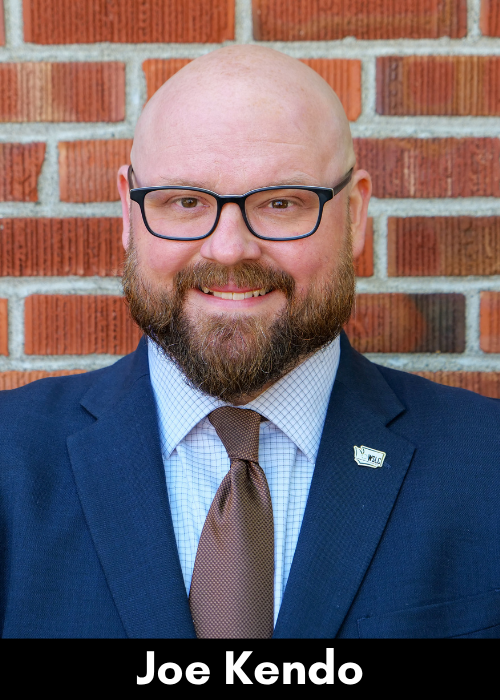 Joe Kendo is Chief of Staff for the Washington State Labor Council, AFL-CIO and part of the WSLC’s Government Affairs team.
Joe Kendo is Chief of Staff for the Washington State Labor Council, AFL-CIO and part of the WSLC’s Government Affairs team.




